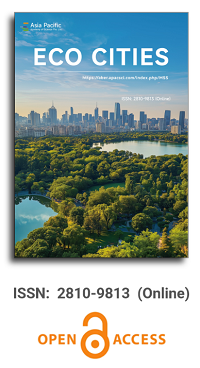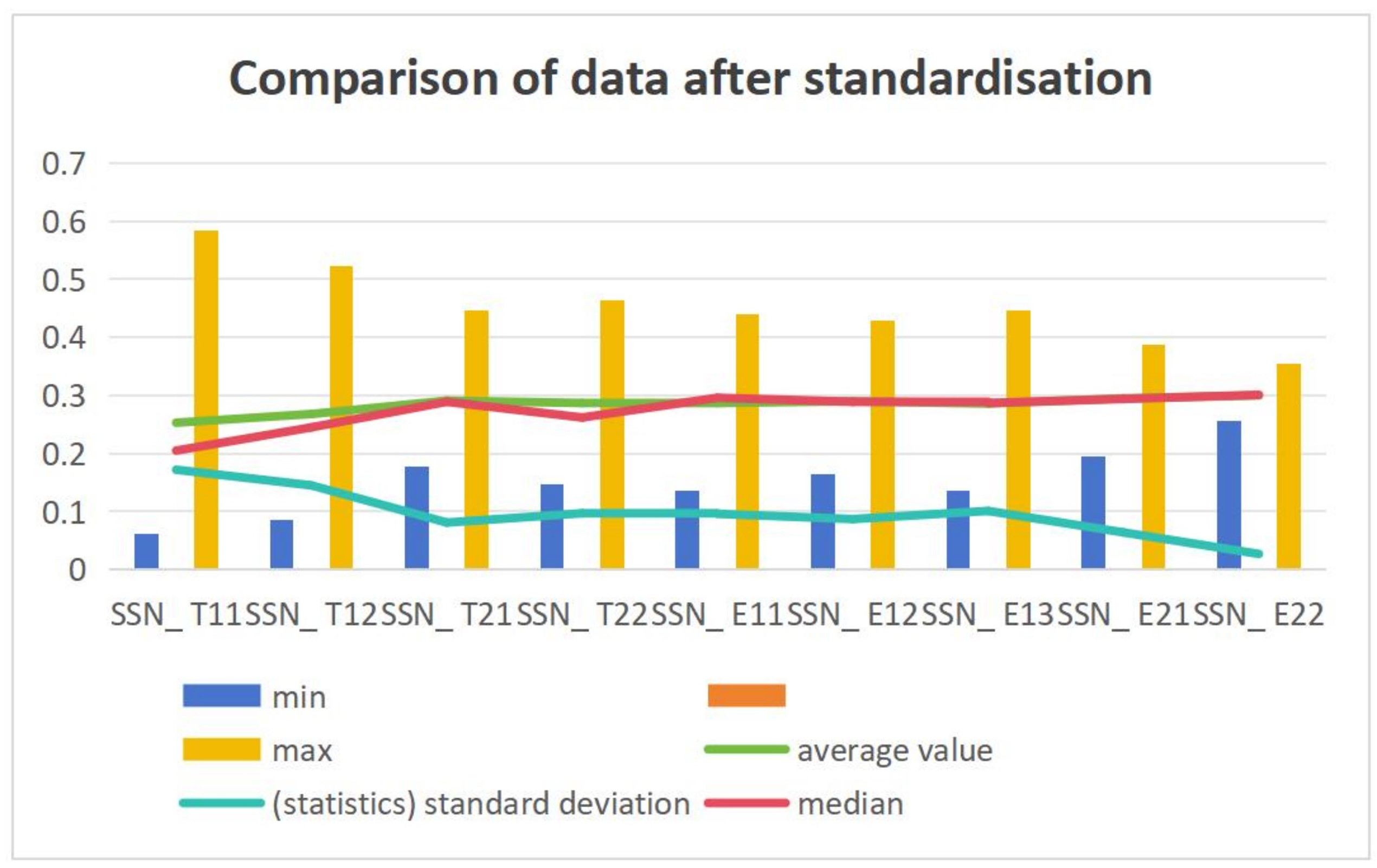


A review of global carbon emission management studies
Vol 5, Issue 1, 2024
Download PDF
Abstract
Under the background of climate warming, the importance of global carbon emission management has become more and more significant. This article reviews and organizes the existing literature on carbon emission management, focusing on the research status from the perspectives of economic instruments for carbon reduction and international cooperation. It explores the economic effects of different policy tools and the emission reduction measures of various countries. This article intends to see the progress and shortcomings of global climate governance through the organization of past research results and provide directions for future research.
Keywords
References
- International Energy Agency. CO2 Emissions in 2023: A new record high, but is there light at the end of the tunnel? Available online: https://www.iea.org/reports/co2-emissions-in-2023 (accessed on 2 March 2024).
- World bank. State and Trends of Carbon Pricing 2020. World Bank; 2020. doi: 10.1596/978-1-4648-1586-7
- Poterba J. Tax Policy to Combat Global Warming: On Designing a Carbon Tax. National Bureau of Economic Research; 1991. doi: 10.3386/w3649
- Bovenberg AL, Goulder LH. Optimal Environmental Taxation in the Presence of Other Taxes: General- Equilibrium Analyses. The American Economic Review. 1996; 86(4): 985-1000.
- Goulder LH. Effects of Carbon Taxes in an Economy with Prior Tax Distortions: An Intertemporal General Equilibrium Analysis. Journal of Environmental Economics and Management. 1995; 29(3): 271-297. doi: 10.1006/jeem.1995.1047
- Cornwell A, Creedy J. Carbon Taxation, Prices and Inequality in Australia. Fiscal Studies. 1996; 17(3): 21-38. doi: 10.1111/j.1475-5890.1996.tb00492.x
- Callan T, Lyons S, Scott S, et al. The distributional implications of a carbon tax in Ireland. Energy Policy. 2009; 37(2): 407-412. doi: 10.1016/j.enpol.2008.08.034
- Andersson JJ. Carbon Taxes and CO2 Emissions: Sweden as a Case Study. American Economic Journal: Economic Policy. 2019; 11(4): 1-30. doi: 10.1257/pol.20170144
- Meckling J. Carbon Coalitions: Business, Climate Politics, and the Rise of Emissions Trading. The MIT Press; 2011; doi: 10.7551/mitpress/9078.001.0001
- Wang ZJ, Zhao LT. The impact of the global stock and energy market on EU ETS: A structural equation modelling approach. Journal of Cleaner Production. 2021; 289: 125140. doi: 10.1016/j.jclepro.2020.125140
- Bakam I, Pajot G, Matthews RB. Estimating carbon price from a closed emissions trading scheme in the agricultural sector. Journal of Land Use Science. 2012; 7(2): 221-238. doi: 10.1080/1747423x.2011.563324
- Jiang J, Ye B, Ma X, Miao L. Controlling GHG emissions from the transportation sector through an ETS: institutional arrangements in Shenzhen, China. Climate Policy. 2015; 16(3): 353-371. doi: 10.1080/14693062.2014.1003526
- Pan W, Kim MK, Ning Z, Yang H. Carbon leakage in energy/forest sectors and climate policy implications using meta-analysis. Forest Policy and Economics. 2020; 115: 102161. doi: 10.1016/j.forpol.2020.102161
- Timilsina GR. Carbon Taxes. Journal of Economic Literature. 2022; 60(4): 1456-1502. doi: 10.1257/jel.20211560
- Goulder LH, Schein AR. Carbon Taxes Versus Cap And Trade: A Critical Review. Climate Change Economics. 2013; 4(3): 1350010. doi: 10.1142/s2010007813500103
- Tong J, Yue T, Xue J. Carbon taxes and a guidance-oriented green finance approach in China: Path to carbon peak. Journal of Cleaner Production. 2022; 367: 133050. doi: 10.1016/j.jclepro.2022.133050
- Bonnie R, Carey M, Petsonk A. Protecting terrestrial ecosystems and the climate through a global carbon market. Philosophical Transactions of the Royal Society of London Series A: Mathematical, Physical and Engineering Sciences. 2002; 360(1797): 1853-1873. doi: 10.1098/rsta.2002.1036
- Kim Y, Tanaka K, Matsuoka S. Environmental and economic effectiveness of the Kyoto Protocol. PLOS ONE. 2020; 15(7): e0236299. doi: 10.1371/journal.pone.0236299
- Jalil SA, Wan Mohamed WM. Carbon dioxide emissions and institutional factors in developing nations: An application of the GMM technique. IOP Conference Series: Earth and Environmental Science. 2021; 685(1): 012008. doi: 10.1088/1755-1315/685/1/012008
- Ali H, Tiwari SK. Overview of Legal and Policy Measures of Carbon Trading and Renewable Energy Certificate (REC) In India. Current World Environment. 2021; 16(1): 259-267. doi: 10.12944/cwe.16.1.26
- Gechev V. The Puny Success of the Kyoto Protocol. SSRN Electronic Journal. Published online 2020. doi: 10.2139/ssrn.3658757
- Mor S, Aneja R, Madan S, Ghimire M. Kyoto Protocol and Paris Agreement: Transition from Bindings to Pledges – A Review. Millennial Asia. 2023; 097639962211415. doi: 10.1177/09763996221141546
- Öker F, Adıgüzel H. Reporting for Carbon Trading and International Accounting Standards. Accounting and Corporate Reporting - Today and Tomorrow. Published online September 20, 2017. doi: 10.5772/intechopen.68959
- Bataille C, Åhman M, Neuhoff K, et al. A review of technology and policy deep decarbonization pathway options for making energy-intensive industry production consistent with the Paris Agreement. Journal of Cleaner Production. 2018; 187: 960-973. doi: 10.1016/j.jclepro.2018.03.107
- Dong C, Dong X, Jiang Q, et al. What is the probability of achieving the carbon dioxide emission targets of the Paris Agreement? Evidence from the top ten emitters. Science of The Total Environment. 2018; 622-623: 1294-1303. doi: 10.1016/j.scitotenv.2017.12.093
- Hekkert MP, Van den Reek J, Worrell E, Turkenburg WC. The impact of material efficient end-use technologies on paper use and carbon emissions. Resources, conservation and recycling. 2002; 6(3): 241-266. doi: 10.1016/S0921-3449(02)00081-2
- Mason B, Perks MP. Sitka spruce (Picea sitchensis) forests in Atlantic Europe: changes in forest management and possible consequences for carbon sequestration. Scandinavian Journal of Forest Research. 2011; 26(S11): 72-81. doi: 10.1080/02827581.2011.564383
- Wiedinmyer C, Hurteau MD. Prescribed Fire As a Means of Reducing Forest Carbon Emissions in the Western United States. Environmental Science & Technology. 2010; 44(6): 1926-1932. doi: 10.1021/es902455e
- Wang Y, Hirvonen J, Qu K, et al. The Impact of Energy Renovation on Continuously and Intermittently Heated Residential Buildings in Southern Europe. Buildings. 2022; 12(9): 1316. doi: 10.3390/buildings12091316
- Sun L, Wang X, Hu Z, et al. Carbon reduction and cost control of container shipping in response to the European Union Emission Trading System. Environmental Science and Pollution Research. 2024; 31(14): 21172-21188. doi: 10.1007/s11356-024-32434-7
- Freedman O, Freedman M, Stagliano AJ. Assessing CO2 emissions reduction: Progress toward the Kyoto Protocol goals in the European Union. International Journal of Business and Social Research. 2015; 5(11): 75-86.
- Herrador M, de Jong W, Nasu K, Granrath L. Circular economy and zero-carbon strategies between Japan and South Korea: A comparative study. Science of The Total Environment. 2022; 820: 153274.
- Erdoğan S, Yıldırım S, Yıldırım DÇ, Gedikli A. The effects of innovation on sectoral carbon emissions: Evidence from G20 countries. Journal of Environmental Management. 2020; 267: 110637. doi: 10.1016/j.jenvman.2020.110637
- Hu S, Zhang P, Wei T. Financial Measures to Reduce Carbon Emissions in Britain, Japan and the United States: A SWOT Analysis. International Journal of Environmental Research and Public Health. 2022; 19(17): 10771. doi: 10.3390/ijerph191710771
- Zhang Y, Kang W, Wang M, Zhuang L. Carbon Tariffs’ Impacts on China’s Economy and Carbon Emission: A Study Based on META-Regression Analysis. Chinese Journal of Urban and Environmental Studies. 2019; 07(03): 1950012. doi: 10.1142/s234574811950012x
- Bosetti V, Carraro C, Tavoni M. Delayed Participation of Developing Countries to Climate Agreements: Should Action in the EU and US be Postponed? SSRN Electronic Journal. Published online 2008. doi: 10.2139/ssrn.1266143
- Hu Y, Ren S, Wang Y, Chen X. Can carbon emission trading scheme achieve energy conservation and emission reduction? Evidence from the industrial sector in China. Energy Economics. 2020; 85: 104590. doi: 10.1016/j.eneco.2019.104590
- Garg A, Avashia V. Carbon competition up above: estimating greenhouse gas emissions of Indian domestic airlines. Greenhouse Gas Measurement and Management. 2011; 1(2): 93-104. doi: 10.1080/20430779.2011.579345
- Dash DP, Behera SR, Rao DT, et al. Governance, urbanization, and pollution: A cross-country analysis of global south region. Cogent Economics & Finance. 2020; 8(1): 1742023. doi: 10.1080/23322039.2020.1742023
Supporting Agencies
Copyright (c) 2024 Jinxi Deng
License URL: https://creativecommons.org/licenses/by/4.0/

This site is licensed under a Creative Commons Attribution 4.0 International License (CC BY 4.0).

Chinese Academy of Sciences, China
Indexing & Archiving
Asia Pacific Academy of Science Pte. Ltd. (APACSCI) specializes in international journal publishing. APACSCI adopts the open access publishing model and provides an important communication bridge for academic groups whose interest fields include engineering, technology, medicine, computer, mathematics, agriculture and forestry, and environment.



.jpg)

.jpg)



